We’ve now completed a third rotation of the Player’s Handbook, meaning that almost every class has had every subclass from that book examined in the Class 101 series! Two classes with lots of subclasses—the cleric and wizard—will need a little extra time to cover. Starting this week, however, we’re moving away from the Player’s Handbook and taking a look at the brand-new subclasses that you’ll find in Tasha’s Cauldron of Everything!
The second new subclass from Tasha’s a beastly chap indeed: the Path of the Beast barbarian. Equipped with a monstrous, transformative rage, this subclass invites your character to be descended from archdruids or lyncanthropes, or possessed by a fey spirit. Join us as this beginner’s guide shows you the basics of how to play this wild warrior!
Check out the other articles in the Barbarian 101 series, like the broad overview of the entire class in Barbarian 101: A Beginner's Guide to Relentless Fury, or the deep dives into specific subclasses in Barbarian 101: Path of the Berserker, Barbarian 101: Path of the Totem Warrior, and Barbarian 101: Path of the Battlerager.
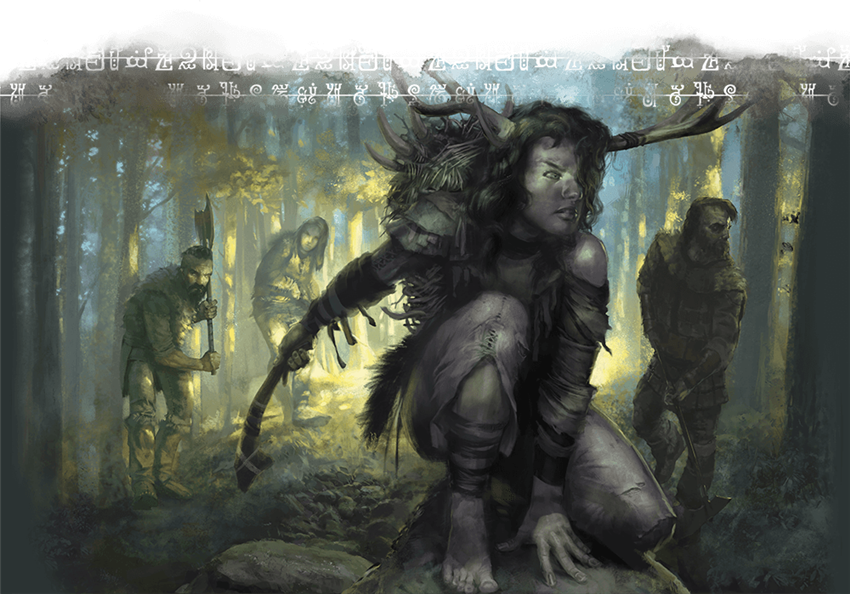
Story of the Path of the Beast
“Look upon her gleaming face, my son.” A woman with silver streaks running through her black hair, creases upon her pale face that spoke of many years of hard living and a jawline that hinted at her strength and bullish perseverance, perched on a clifftop beside her son. The sound of shouts echoed from the forest behind them, and red, flickering light danced in the distant heart of the woods. One of her rough hands rested upon her son’s shoulder as she looked up at the moon. His gaze followed hers. His build was lanky and thin, for he was only barely a teenager, but his mother was sure that in time he would grow into the power that both she and his father possessed.
Blood dripped from her lips, her fingertips, and from a raw gash across her chest. Her simple, green tunic hung open, and her wolf-gray undershirt was spattered with a dark splotches of blood mixed with sweat and mud. She spoke in a voice as cool as the night air around her and as unwavering as the moonlight that shone from above, yet the undercurrent of fear was as palpable as the iron scent of the blood upon her body.
“The moon is mother to all of our family,” she continued. Her son knew what was going on. Why the fires were burning in the forest, why the roar of battle echoed in the distance. He hung on her every word. He couldn’t take his eyes off his mother’s scarred face, even as she stared at the distant moon. “She keeps us strong. We pray to her for guidance, as our foremothers did—even in the times when we called our gift a curse.”
“Why is this happening?” the son asked his mother, tears welling in his golden eyes. His mother’s hand pressed harder against his back as she took a deep, painful breath in. Tears had begun carving a path down her stoic face, too.
“The people of the south, in their castles. Do you remember the stories I told you before bed?”
“When I was young.”
“When you were young,” she repeated. “Remember them. They have come for us. They don’t understand our family’s ways like we have come to.” She paused for a long time, savoring what she knew might be the last moments she would have with her child. A scream rang out in the night, and she turned to look upon her son’s face. He was crying. So was she. “Run. Run until you reach the town on the woods’ northern border. Pretend to be one of them, and run again when they learn. I will meet you again, in the mountains of your father’s country.”
She stood, and growled deep in her throat. Her eyes flashed in the moonlight and thick gray fur sprouted along her arms as her nails sharpened into jet-black claws. The barbarian turned once more to her son. Though her form had begun to change, her voice was the same. “The moon blessed our people. It is not a curse. I love you.” Then she was gone, vanished into the woods’ blazing shadows.
Path of the Beast Features
The Path of the Beast grants you a number of features that make you a flexible, hardy combatant skilled in unarmed combat. The barbarian gains access to four subclass features in addition to their barbarian class features, gained at fairly regular intervals at 3rd, 6th, 10th, and 14th level. You can read all of the Path of the Beast features in Tasha’s Cauldron of Everything. In summary, your subclass features allow you to:
- Gain a special, bestial attack while you rage by transforming your teeth into fangs, hands into claws, or growing a tail.
- Bypass damage resistances with your bestial weapons
- Gain a unique benefit to climb, jump, or swim with primeval power
- Curse the targets of your attacks with rabid fury
- Lead your party by granting them additional damage while you rage, and grant yourself temporary hit points for each member of your pack.

Benefits of the Path of the Beast
The Path of the Beast’s greatest strengths are—in addition to its well-balanced offensive and defense power—its versatility. Like many other subclasses in Tasha’s Cauldron of Everything, the Path of the Beast often grants you several options when you gain a subclass feature, and doesn’t lock you in to any one decision. Other subclasses in earlier books, such as the Path of the Totem Warrior barbarian, require you to pick a benefit and live with it for the rest of your adventuring career, but this subclass allows you to change up the combat benefits granted by your Form of the Beast feature whenever you rage, and alter the exploration benefits granted by the Bestial Soul feature whenever you finish a short rest.
The Path of the Beast is a strongly offense-focused subclass, with most of its abilities making it easier for you to deal more damage—sometimes in interestingly roundabout ways, such as forcing an enemy to attack one of its allies. Beyond this, the Path of the Beast is one of the barbarian’s most party-focused subclasses. While it’s not a particularly potent tank per se, since it lacks a way to discourage foes from attacking the barbarian’s allies, the subclass does grant you features that buff your allies and debuff your enemies, making it easier for your allies to fight with the same ferocity as you.
Drawbacks of the Path of the Beast
There’s a lot to love about the Path of the Beast, from their versatility, to their reliable damage output and their enduring physical durability. But no subclass is without their weaknesses. As with most barbarian subclasses, the Path of the Beast’s greatest drawback is their lack of options when it comes to out-of-combat actions. The exploration buffs granted by the Bestial Soul feature are useful, but when compared to the broad utility of spellcasters who have access to spells like charm person, disguise self, and other abilities that give them an edge in noncombat situations.
Of course, there’s something to be said for the pure simplicity of a barbarian. It’s the class for you if you want to fight, or if you prefer on-the-fly ingenuity to pre-determined magical tricks, and the Path of the Beast does it in an interesting and fresh way, with several new tricks to play with.
Suggested Build
Like most classes in D&D, the barbarian doesn’t choose their subclass until 3rd level. If you’re playing a barbarian from 1st level and think you want to follow the Path of the Beast later, consider working with your Dungeon Master to figure out the source of your power early on. Why does bestial power linger dormant in your soul? Or perhaps you might ask your DM to come up with an event in the campaign that will grant you these remarkable powers.
A Path of the Beast barbarian should place their highest ability score in Strength and their second-highest in either Dexterity or Constitution, depending on whether you think more hit points or a higher Armor Class is more important to you. Thanks to the new “Customizing Your Origin” section in Tasha’s Cauldron of Everything, you don’t have to let your character’s race dictate their ability scores; you can reassign your racial ability score bonuses to any score you see fit. If you’re playing without these rules, the half-orc and mountain dwarf races grant useful bonuses to Strength and Constitution, as well as other useful mechanical bonuses. However, the best way to create a character is to choose the race suits your character best, and build outward from there.
Choose EQUIPMENT instead of GOLD at the end of character creation. You’ll need a weapon to work with until you gain the ability to manifest bestial claws, fangs, or a tail, and a greataxe is a perfectly useful heavy weapon—but you have the choice of any other martial weapon, if you prefer. Having two handaxes is always useful, since a barbarian without a way to fight foes at range is a barbarian stymied by the first crevasse or cliff they find.
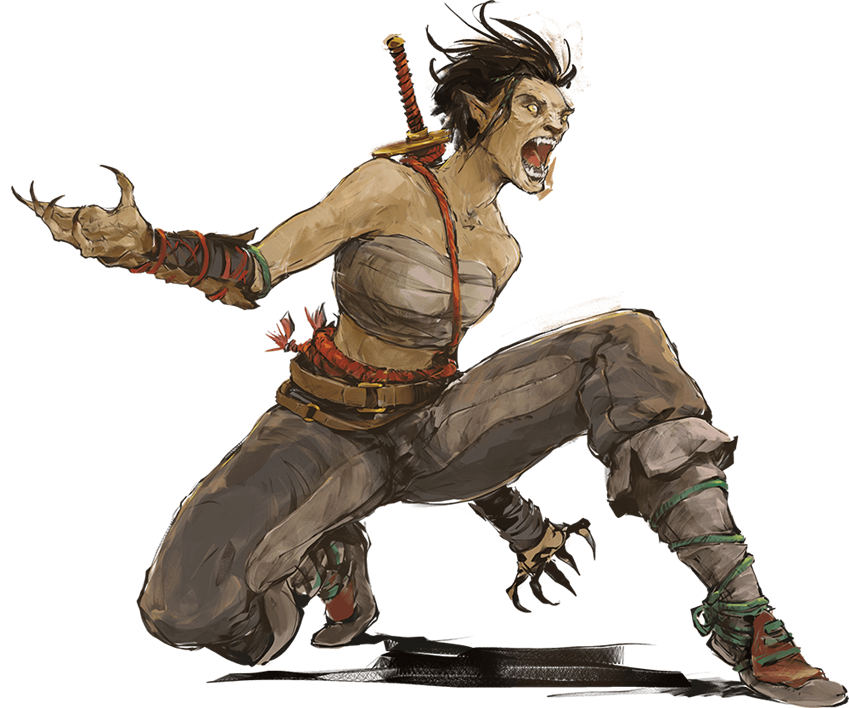
Feats
Once you’ve improved your Strength score to 18 or 20, you can increase your power with a few useful feats. The following feats are good picks for Path of the Beast barbarians, and will improve your reliability in your own desired area of expertise:
Mobile. You already get expanded movement speed from your class, and movement options from your subclass. Double down and tear across the battlefield with ease by taking this feat!
Sentinel. When you’ve got your tail out, the extended reach of your tail synergizes quite well with this feat, which wants you to make plenty of opportunity attacks.
Slasher. This new feat from Tasha’s Cauldron of Everything makes you a ferocious mauling beast when paired with two or three claw attacks per turn. The Crusher and Piercer feats are also good if you prefer to fight with fangs or a tail instead, but Slasher is head and shoulders the best of the bunch for you.
If you want more advice for building an barbarian, check out Barbarian 101. Have you ever played a Path of the Beast barbarian? What advice would you give to players that want to play this subclass? Join us next week as we dive deep into the contents of Tasha's Cauldron of Everything with Bard 101: College of Creation!
Create A Brand-New Adventurer Acquire New Powers and Adventures Browse All Your D&D Content
 James Haeck is the lead writer for D&D Beyond, the co-author of Waterdeep: Dragon Heist, Baldur's Gate: Descent into Avernus, and the Critical Role Explorer's Guide to Wildemount, a member of the Guild Adepts, and a freelance writer for Wizards of the Coast, the D&D Adventurers League, and other RPG companies. He lives in Seattle, Washington with his fiancée Hannah and their animal companions Mei and Marzipan. You can find him wasting time on Twitter at @jamesjhaeck.
James Haeck is the lead writer for D&D Beyond, the co-author of Waterdeep: Dragon Heist, Baldur's Gate: Descent into Avernus, and the Critical Role Explorer's Guide to Wildemount, a member of the Guild Adepts, and a freelance writer for Wizards of the Coast, the D&D Adventurers League, and other RPG companies. He lives in Seattle, Washington with his fiancée Hannah and their animal companions Mei and Marzipan. You can find him wasting time on Twitter at @jamesjhaeck.








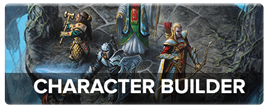
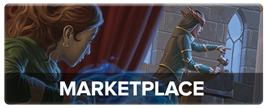
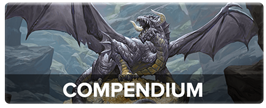
-
View User Profile
-
Send Message
Posted Dec 12, 2020People are trying to argue that there's an insurmountable difference between holding a weapon in your hand and having a weapon strapped to or growing out of your hand that prevents claws from being dual wielded.
-
View User Profile
-
Send Message
Posted Dec 12, 2020I'm arguing that it could go either way. If you're being strict with the reading, TWF says you must be *holding* melee weapons with the light property. Irrespective of what makes sense, the wording that describes the claws does not grant it the light property, and you're not holding a weapon. You're using your claws as a weapon.
Then you get to the Duel Wielder feat. It removes that requirement for the light property, but it does not explicitly remove the "holding" requirement. It says, "You can use two-weapon fighting even when the one-handed melee weapons you are wielding aren’t light." So the big question is: does the fact that they used the word "wielding" instead of "holding" remove the requirement to be holding the weapon? I could make reasonable arguments for both sides on this one.
-
View User Profile
-
Send Message
Posted Dec 12, 2020"People are trying to argue that there's an insurmountable difference between holding a weapon in your hand and having a weapon strapped to or growing out of your hand"
Nobody is arguing that. The argument is that's what is written. It doesn't matter whether something is similar, just the precise words on the page, when discussing RAW.
What people would allow in their own games is completely different, of course. There are multiple interpretations you could take. I think there are valid arguments either way. However, that makes it ambiguous, and you will never be able to be certain that a DM would rule in your favour without discussing it with them.
-
View User Profile
-
Send Message
Posted Dec 12, 2020"and you're not holding a weapon. You're using your claws as a weapon."
This is not actually true. In RAW, the rules state that they are, in fact, weapons:
Starting when you choose this path at 3rd level, when you enter your rage, you can transform, revealing the bestial power within you. Until the rage ends, you manifest a natural weapon. It counts as a simple melee weapon for you, and you add your Strength modifier to the attack and damage rolls when you attack with it, as normal.
And this states that each hand is a weapon.
"Each of your hands transforms into a claw, which you can use as a weapon if it’s empty."
Therefore, you are wielding two simple melee weapons. Taking the Dual Wielder feat would allow you to fully take advantage of technically dual wielding.
-
View User Profile
-
Send Message
Posted Dec 13, 2020You are still not holding them. TWF rules state you must be holding the weapons in your hands, so this comes down to whether you rule the Dual Wielder feat to cancel that requirement as well as the light requirement. This leaves it ambiguous, and quite reasonable for a DM to rule either way being RAW.
Personally, I feel that the Dual Wielder reads as only removing the light requirement, but would still leave the requirement for the weapons to be held in your hands. As the claws aren't (in fact, you no longer technically even have hands as they have transformed into claws), I would rule against this being RAW. However, it's definitely not 100% clear.
-
View User Profile
-
Send Message
Posted Dec 13, 2020I did not say they aren't weapons. I said you're not holding them.
-
View User Profile
-
Send Message
Posted Dec 13, 2020Regarding wielding vs. holding this came up I think earlier in this thread, but the common definition for wielding with regards to weapons and tools (as opposed to abstracts like power or authority) is "to hold and use", so held is still a requirement.
Ultimately the point that cinches it for me though is the fact that this isn't new to the Path of the Beast's Claws (or Armorer's Thunder Gauntlets); it's been the case for years now for any playable race with natural weapons (Aarakocra, Tabaxi, Minotaur etc.), and WotC hasn't told us they can be used in sage advice or errata'd any rules to make it clearly the case. They can't be unaware of it, and indeed it's arguably very specifically by design, as this is exactly how monsters with claws works as well, as most have only a single claws attack as standard, so if you get extra attack (and Path of the Beast's additional Claws attack) you're already getting more than normal.
-
View User Profile
-
Send Message
Posted Dec 14, 2020You'd get three normally. The Attack action at level five gives you two attacks, but the sublcass grants an extra attack. The capitalization is key here. You can get four attacks if you go for a longtooth shifter though. Heck, you could do five with that and haste.
-
View User Profile
-
Send Message
Posted Dec 14, 2020Wow! I didn't thought about that shifter's racial feature! Kudos!
Even if, admittedly, it requires a lot of set up because of action bonus starvation. You need to rage on your first turn, shift on your second (or vice versa), and begin to reap the benefits of your shifter's bonus attack only from the third round.
-
View User Profile
-
Send Message
Posted Dec 15, 2020It's only once per short rest, and like you said you're not making 4 attacks until the 3rd round of combat. Still pretty amazing. I think a better use is to spread it out as a filler for between rages. Doing dungeon crawls or other activities where you're going combat encounter to combat encounter, you need to manage your rage resource.
Me, I went Shifter Wildhunt. Who wouldn't want to go an entire combat encounter using reckless attack without the enemies getting advantage on you? You use your first turn to rage, then immediately on your second turn the effects kick in. Or, you can still use it as a filler for between rages. Since you don't have damage reduction while not in rage, use your Wildhunt shift to reckless attack without taking extra damage.
-
View User Profile
-
Send Message
Posted Dec 15, 2020How about a beast that only uses their tail natural weapon, but you theme it as a frog tongue? All the 6th level exploration features would work well with a frog theme, and the idea of sticking your ridiculously long tongue out to hit your enemies is so creepy it's hilarious.
-
View User Profile
-
Send Message
Posted Dec 16, 2020Works great, until you get "disarmed".
What's that barbie? I'm sorry, can't understand a word your sayin'! Forks are shellacking the cattle? We don't own any livestock.
-
View User Profile
-
Send Message
Posted Dec 16, 2020I have always loved playing barbarians, and I REALLY love this subclass. I played a Tortle Path of the Beast who was possessed by a dark fey spirit. It was awesome.
Barbarians often get pigeon holed as one dimensional by being able to just take damage a hit things hard. But I have loved using barbarians ability to have advantage on Athletics as a real battlefield manipulator! Tearing apart dams to release water, pushing boulders onto foes. Even jumping onto the head of a beholder and tearing it's eye stalks out one by one. The options are only limited by your creativity!
-
View User Profile
-
Send Message
Posted Dec 17, 2020It gives you another claw attack when you use the attack action on your turn. Extra attack is part of the attack action so you end up with three attacks at level 5
-
View User Profile
-
Send Message
Posted Dec 17, 2020I disagree that the claws are useless. A level 5 barbarian with +4 modifier using a great axe (no gwm) would have a DPR of around 25, while a barbarian using claws with the same modifier would have a DPR of 28.5. Given the fact a barbarian using claws can also wield a shield I think allowing a 4th attack would make the beast path OP
-
View User Profile
-
Send Message
Posted Dec 17, 2020I play a tortle barbarian grappler with shield master. It's pretty fun, rage gives me advantage on grappling then once I knock them prone they can't get up and I can attack with advantage, meaning I rarely ever use reckless attack but still roll everything with advantage. It makes a very very durable tank.
-
View User Profile
-
Send Message
Posted Dec 18, 2020Greatax + 2 claw attacks DPR = 31.5. Or just 3 claw attacks (slightly outdamaging the big weapons) AND carry a shield.
-
View User Profile
-
Send Message
Posted Dec 18, 2020I'm playing as an artificer/barbarian and instead of her body changing she has installed augmentations on herself. So she's pretty much a Goliath cyborg and I love her.
-
View User Profile
-
Send Message
Posted Dec 18, 2020So, along the same claw debate, imagine if you're a Dragonborn Barbarian on this path. Dragonborn's get the Dragon Hide feat that produces retractable claws you can pop on whim, without raging. So, pop those bad boys, go into a rage, produce a tail or fangs, then (at level 5) you get 2 attacks with your claws and one attack with your tail for reach or fangs for low-grade healing. That's 4 attacks per round using different weapons types each with a special ability. Top it off, take the sentinel feat and, if you have your tail, you also get to swing it with a reaction when someone comes in range.
-
View User Profile
-
Send Message
Posted Dec 18, 2020I'm confused about how you get four attacks out of that? Dragon Hide claws are just unarmed strikes, they have no special mechanism for attacking multiple times, and they're not held weapons so they're not eligible for two-weapon fighting, plus they're competing for the same two attacks as your tail or bite. All it means is you can have a claws attack in addition to one of the others from Path of the Beast, but you don't gain any special benefits unless I've missed something?